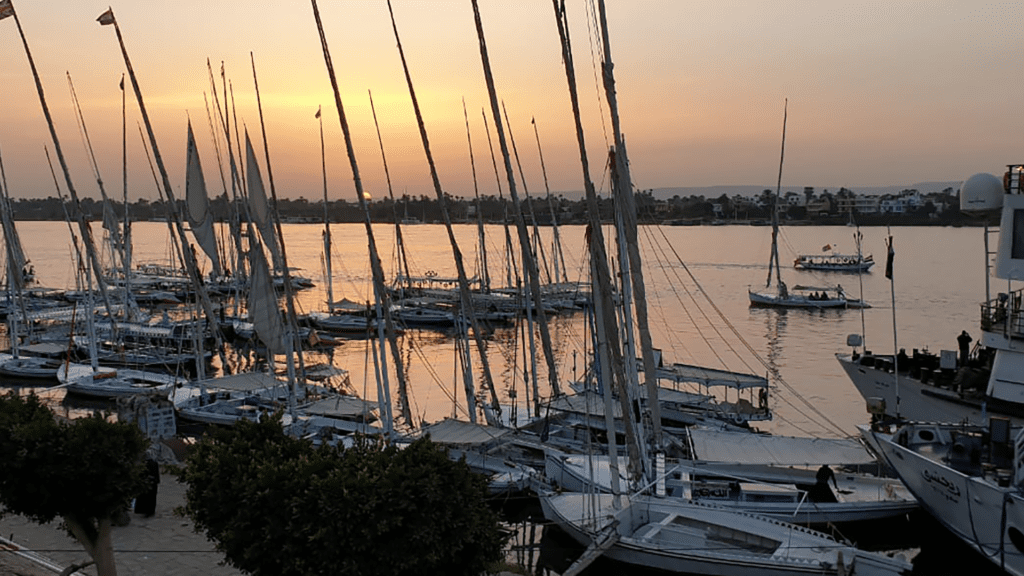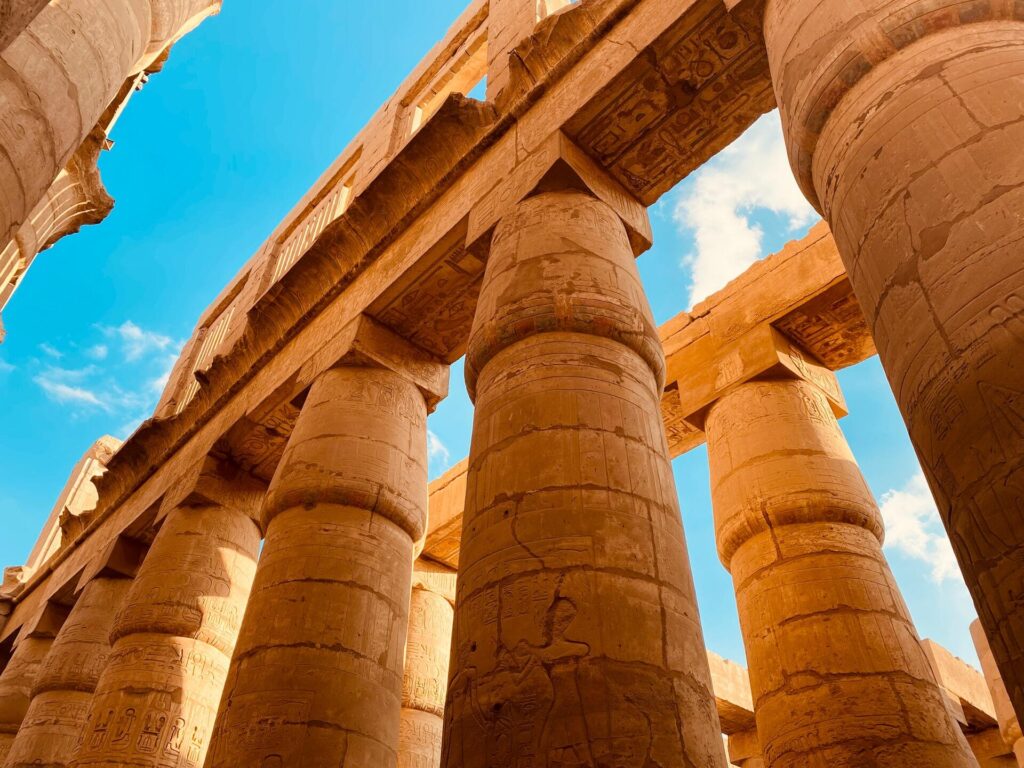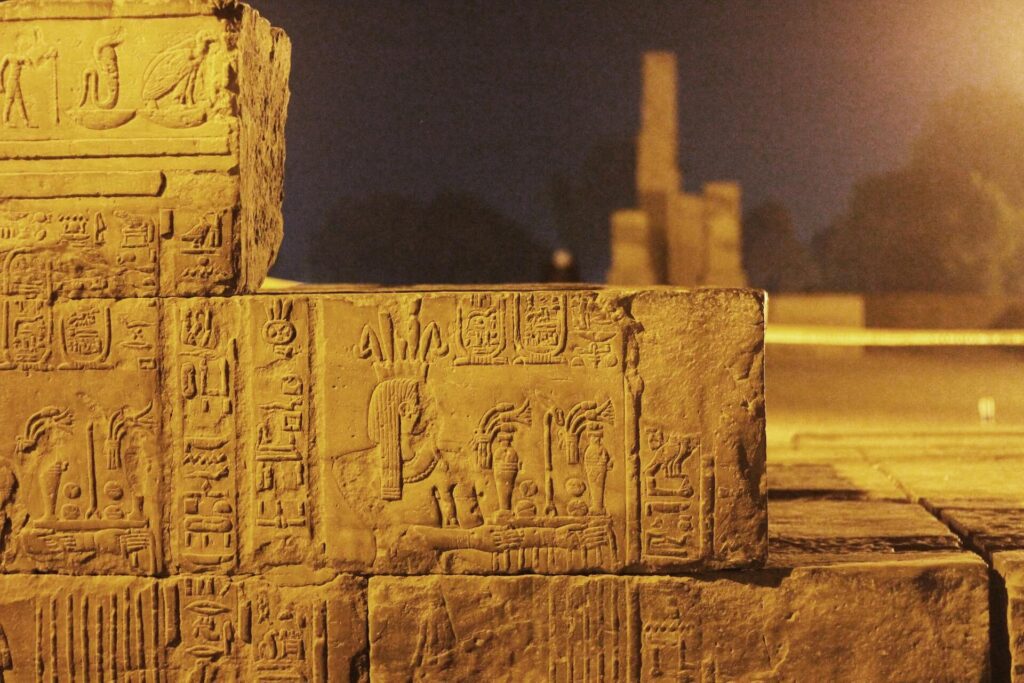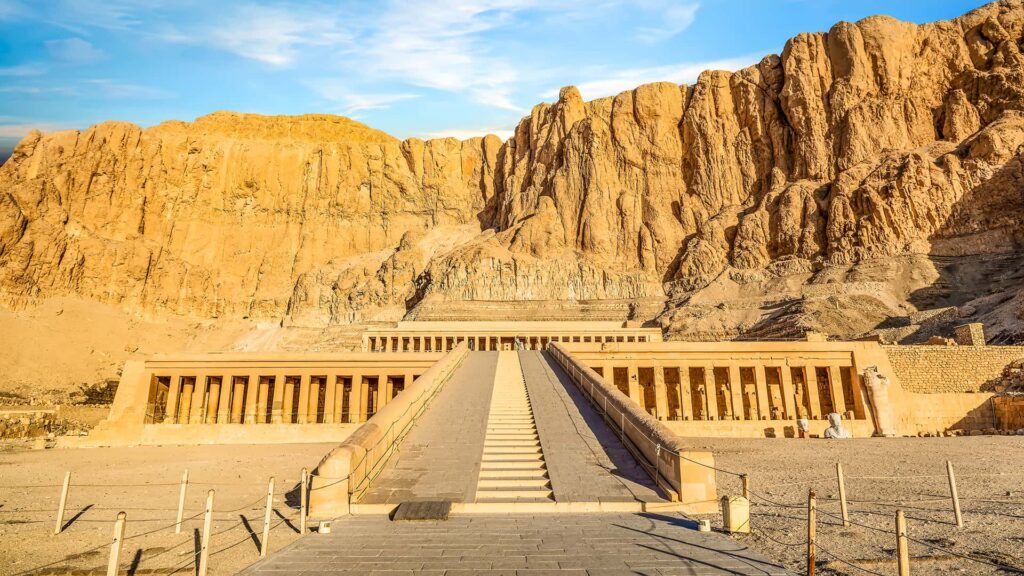Millions of tourists visit the Nile each year, journeying up this world-famous river to learn about the archaeological and cultural sites spanning millennia.
As well as being an essential part of history, the Nile is a haven for wildlife. Creatures such as the hippopotamus, Nile crocodile, rock python, and spotted-neck otter call the world’s longest river home.
In this guide to cruising the Nile in Egypt, we want to highlight the unmissable sites, from hidden tombs to unique temples to ancient structures that align with the Milky Way!
If this blog has inspired you to take a trip to Egypt, consider pursuing our luxury custom tours for inspiration, and do feel free to get in touch if you have any questions.

Visit the Karnak Temple Complex
Many Nile cruises stop at Karnak – and for good reason. Karnak, or Al Karnak, is an incredible temple complex comprised of a myriad of temples, towers, and chapels spread over 1,000 hectares (that’s 1,000 football fields.)
Built to honor the gods Amun, Mut, and Khonsu, Karnak is considered to be one of the most important places of worship in the Egyptian Empire.
Located in Luxor, on the east bank of the river Nile, Karnak was built from around 2055 BC to about 100 AD. The complex earned the title of UNESCO World Heritage Site thousands of years later, in 1979.


Karnak had multiple purposes, one of those being an observatory. Did you know that the temple is perfectly aligned with the Milky Way? If you visit at night, make sure to look up between the columns, and there you will be able to see one of the most magnificent wonders of space!
This temple complex is a must-visit during your river Nile cruise. It’s recommended to visit this historic site in the early morning or late afternoon; this is when it’s most beautiful.
Explore the Temple of Kom Ombo
When on your tour of the Nile, make sure to visit Kom Ombo, located in the Aswan Governorate in Upper Egypt. The temple was built in 180-47 BCE during the Ptolemaic dynasty.
This temple is unique, as it’s dedicated to two Gods: Sobek and Horus. The two spaces of worship are separate and entirely symmetrical, making it one of the most famous and fascinating temples in Egypt.
Wondering why there are two separate places of worship? Due to a conflict between Sobek and Horus, the Ancient Egyptians felt it necessary to separate them.
Sobek was the ancient god of crocodiles and is often associated with fertility and death. Therefore, the location of Kom Ombo is appropriate as vast numbers of crocodiles would gather at that spot.
The other half of the temple is dedicated to Horus, the falcon-headed god of kingship and the sky.


When you visit this slice of history, make sure you pay attention to the pylons. Pylons are stone structures placed by temple doors and are usually decorated with carvings. The Temple of Horus has an imposing entrance pylon covered in intricate carvings that towers over tourists at 37 meters high.
It’s recommended that you take a tour to get the most out of visiting these breathtaking structures. Get inspired by our luxury Cruise the Nile in Style tour or get in touch to plan your perfect custom Nile cruise.
Experience the Valley of the Kings
The Valley of the Kings is truly a once-in-a-lifetime experience. Here you can travel deep underground to witness the final resting places of the most important rulers in Ancient Egypt.
The Valley of the Kings, or Wādī Al-Mulūk in Arabic, is located west of the Nile in Upper Egypt and was part of the ancient city of Thebes. The tombs were built to protect the pharaoh’s bodies, safely hidden away in the vaults.
When you enter the Valley of the Kings, there’s a 3D replica of the valley to understand the incredible engineering undertaking that took place.
So far, 110 tombs have been unearthed, the most famous being the tomb of Tutankamen.
The pharaoh’s tomb was discovered in 1922, and the mummy of the young pharaoh was completely intact. Moreover, the grave’s artwork retains its original color from the Ancient Egyptian period, partly due to the valley’s warm and dry conditions.
Another famous tomb is that of Seti I; it’s the longest tomb measuring 450 feet and situated a whopping 200 feet underground. It’s important to remember to bring comfortable shoes as a trip to the Valley of the Kings requires a lot of walking!


So there you have it, it would be impossible to summarize all the wonders of the Nile in one short guide. But these are the essential stops you should consider while cruising the Nile in Egypt, according to the locals.
This is your sign to bask in the glory of Karnak, learn about the unique Kom Ombu temple, and travel deep underground to witness the Valley of the Kings.
The Nile has a wealth of culture and history on offer, in addition to its stunning natural beauty and diverse wildlife. Want to see more of Egypt beyond the Nile? Take a look at our custom tours of Egypt. If you have any questions, please don’t hesitate to contact us.